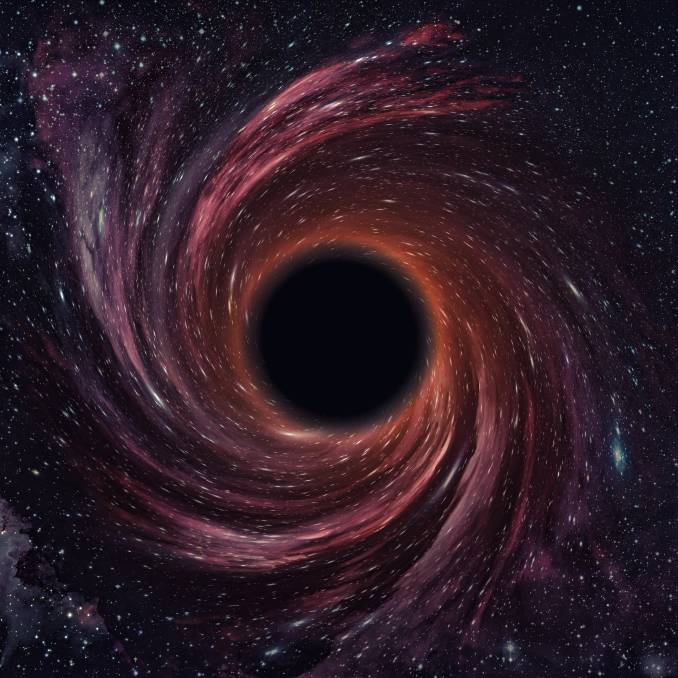Last week, scientists announced the detection of the most massive black hole collision. But what exactly is a black hole?
A black hole. Elements furnished by NASA. Picture: Shutterstock
A black hole is an area in space where the gravity is so strong that nothing, not even light, can escape.
It is an area where a massive amount of matter has been squeezed together into a small area. And where you have mass, you have gravity.
They are not tears or “holes” in the universe – they are real objects. In fact, black holes are spheres, like a ball sitting in space just like Earth or the Sun.
Let’s put this into scale. You can fit about 1 million Earths inside the Sun. Now imagine a star 10 times bigger than the Sun. Now, take that star, and squeeze into an area about the size of Canberra. That is a black hole – a small one.
Black holes come in three main sizes – stellar mass black holes, intermediate black holes, and supermassive black holes.
Stellar mass black holes are the baby black holes, the result of exploding (or rather collapsing) stars about 10 to 60 times the mass of our Sun. There could be upwards of 10 to 50 million of these black holes in our Milky Way galaxy alone.
Inside a star, it is smashing elements together (fusion) to create heat and energy. As it does it this, it is adding extra mass in its core.
To support this extra weight, it burns more fuel, which in turn, creates more mass. At some point, a star cannot keep up this epic battle, and it starts to collapse in on itself. In doing so, part of the star explodes as a supernova. However, most of the mass of the star comes crashing down, being squeezed into a tiny object. A black hole is born.
Since 2015, LIGO and now VIRGO, experiments with super-sensitive lasers and mirrors, have been searching for the collisions of these stellar mass black holes. As these black holes collide, they produce ripples or waves thought space, called gravitational waves.
Last week, scientists announced that two black holes, one weighing about 66 times the mass of the Sun, and the other about 85 times, merged together to form a 142 solar mass black hole.
Over time, we think these black holes merge or collide to form the intermediate mass black holes – between 100 and 100,000 solar masses.
Then there are the supermassive black holes. The reside in the centres of big galaxies, and can weigh millions to billions of times the mass of the Sun.
In our Milky Way, we have Sagittarius A*, weighing about 4 million times the mass of the Sun.
Black holes get a reputation for being giant space vacuum cleaners – sucking anything and everything. In other words, they are like dog in space, swallowing everything they can.
But just like a dog, there is a limit to how much a black hole can swallow. You have to be close to the black hole to be swallowed by it. And, just like a dog, they don’t care what they swallow. Black holes will swallow other black holes, and will continue to do so.
- Brad Tucker is an astrophysicist and cosmologist at Mt Stromlo Observatory and the National Centre for the Public Awareness of Science at the ANU.
